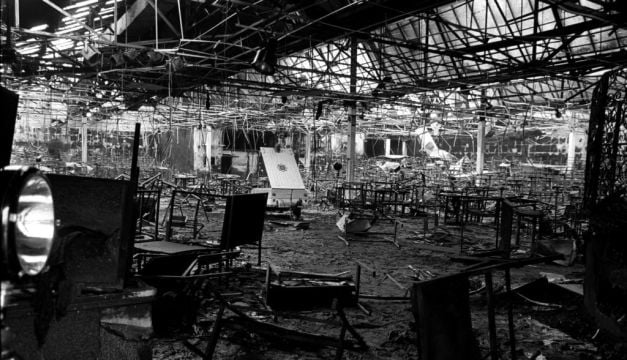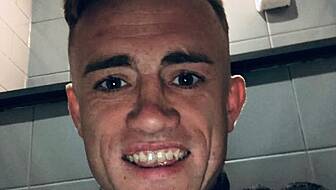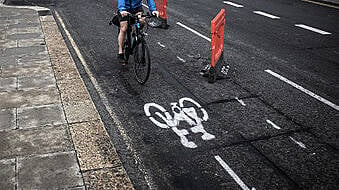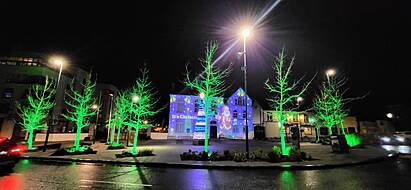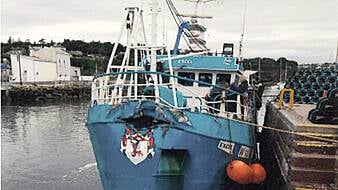An inquest jury has heard that the Stardust nightclub was deemed a “pretty horrendous” fire risk by an insurance company’s fire surveyor, who noticed that “highly combustible” foam insulation was used in the construction of a room in the building.
The Dublin District Coroner’s Court on Wednesday heard the evidence of Richard Williams, during the inquest into the blaze that killed 48 young people when it swept through the Stardust in the early hours of Valentine’s Day, 1981.
In his original statement, which was read into the record by the court registrar, Mr Williams said he worked with Hibernian Insurance from 1961 to 1997.
Until 1981, he was in underwriting. He said that in 1979, he was asked to quote for fire insurance on the Stardust, and after reading a fire survey on the premises, he declined to quote.
In 1981, he was appointed a fire surveyor, and he was sent out to survey the property on behalf of an insurance company.
“I duly reported on the fire risk, which I deemed as pretty horrendous and recommended that we did not quote, so it was turned down again,” he said.
New cold room installed
Mr Williams said that a new cold room had been installed behind the bar, which was built with aluminium and polystyrene foam insulation, which was considered “highly combustible”.
Mr Williams said that he also saw a push bar exit which was chained, and when he asked about it, he was assured that the chains were removed before the premises were opened to the public.
In response to questioning by Mark Tottenham BL, a member of the coroner’s legal team, Mr Williams said that his opinion that the property was a “pretty horrendous” fire risk was due to “the highly combustible cold room” and the fact that on a number of walls were polystyrene tiles painted over, and there was a false ceiling of polystyrene.
Mr Tottenham said that the jury had previously heard that the wall covering was not polystyrene, but that most walls were covered with carpet tiles.
“The walls beside me were distempered polystyrene tiles,” he said.
Mr Williams’ evidence to the inquest will continue on Thursday.
Fire up the wall
Earlier in the day, the jury heard evidence from Fergus Kane, who told Simon Mills SC, a member of the coroner’s legal team, that he could see the fire progressing up the wall, before it hit the ceiling and “shot out at lightning speed” towards the dancefloor, causing “black toxic smoke” to billow out.
He said he got to an exit door, where he could feel a chain on the door, so he tried to move the chain.
“I was hitting the door with my shoulder, and nothing was happening, so I took three or four steps back and I ran at the door and hit it with my shoulder, and I bounced off the door onto the ground.
"As I was crawling back to the door, I came across a number of people on the ground that were motionless,” he said.
He said that he again tried to get the chains off the door and was hitting it with his shoulder, but it wasn’t budging.
“The flames started coming in on top of me, and there were droppings from the ceiling that were like hot wax,” he said.
Doorman
Bernard Condon SC, representing a number of the families of the victims, put it to the witness that the jury had previously heard evidence from a doorman who had suggested that people trying to open the door did not know how to do it and so the doorman stepped forward and released that door with a simple push. Mr Kane said that was not correct.
“The chain was wrapped around the release bar, I couldn’t see if there was a padlock on it because I was in the dark, but I could feel the chain. I certainly was trying to push the bar up and get it straight back down it and it wasn’t budging,” he said.
He said that he took in a breath of “toxic air” and had to get down on the floor as there was air at the bottom.
“People were colliding with each other, falling over people on the ground. People were having to get down on the ground because they couldn’t breathe, and then people were falling over them,” he said.
In response to Gary Moloney BL, representing a number of the families, Mr Kane said that a few weeks before the fire, he attended a concert in the Stardust where the nightclub was “overfull”.
“The security hadn’t got control of the situation, there were people jumping up on the stage, they had to stop the concert a couple of times, it was a bit chaotic. I’d never seen it that crowded before, and the doormen were having trouble controlling the crowd. They hadn’t got enough bodies there to deal with the large crowd,” he said.
'Crackling noises and screams'
Further evidence was heard from Anthony Pasquetti, who gave evidence to Des Fahy KC, representing a number of families, that from his home near the Stardust at Maryfield Drive, he could hear “crackling noises and screams”.
“I ran into the garden, and I could hear the crackling and the odd spark and screaming,” he said, going on to say that “the noise of the crackling was unbelievable”.
“It was as if there was timber, and there were sparks coming through the roof,” he said.
He said that he then ran upstairs in his house and looked out the window, and he could see the roof was glowing.
“As if it was underneath the sheeting,” he said. He told the jury that he then ran back downstairs and got onto the roof of his garage, and he could see that the flames had broken through the roof of the Stardust by that point.
“The flame was rolling across the roof,” he said.
He gave evidence that he then returned to the Stardust nightclub. He confirmed to Mr Fahy that he could hear screams from inside the windows of the Stardust toilets, and it was both male and female voices he heard.
The inquest continues on Thursday in the Pillar Room of the Rotunda Hospital.
